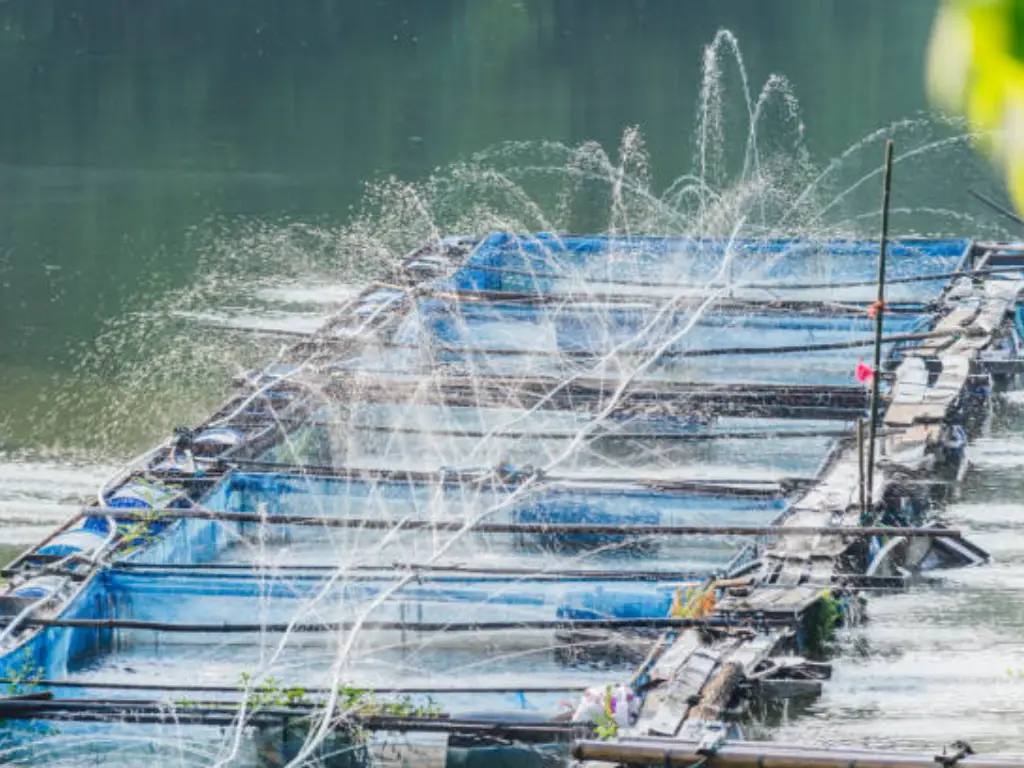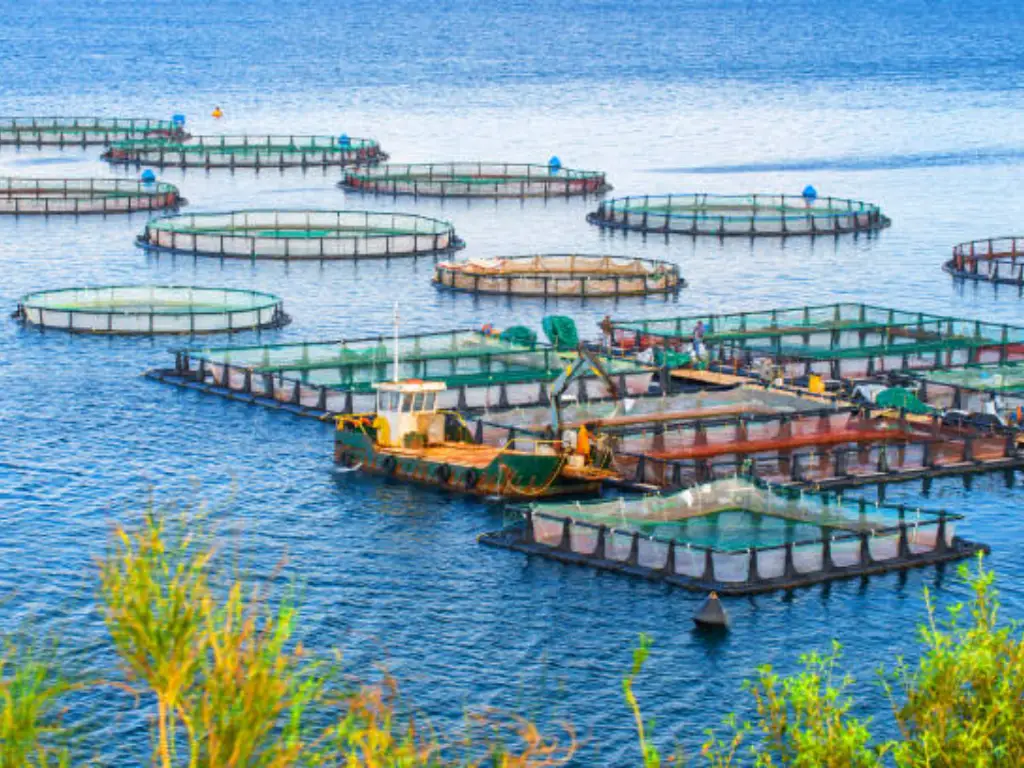Introduction
Starting to fish can seem a bit daunting because there are so many options, lots of gear, and a little pressure to do it well. However, the most important part of a good start is having the right boat. Pontoon boats are ideal for new anglers because their wide and stable design and plenty of space allow for fishing comfortably on one side of the boat. You won’t feel cramped in small spaces, as you would on a bass boat. Rather, you have space to relax, practice, and improve, which is perfect for a beginner.
Fishing pontoon boats are useful as well as comfortable. Since they have space for rod storage, fishing rod holders, and a small fish finder, you can add these features as you get more into fishing. No matter if you are traveling alone or with friends, a pontoon gives you both useful features and a chance to relax. We will explain how to create a beginner-friendly pontoon boat fishing setup, starting with choosing the boat and continuing with gear, the layout, and maintenance. Let’s get started.
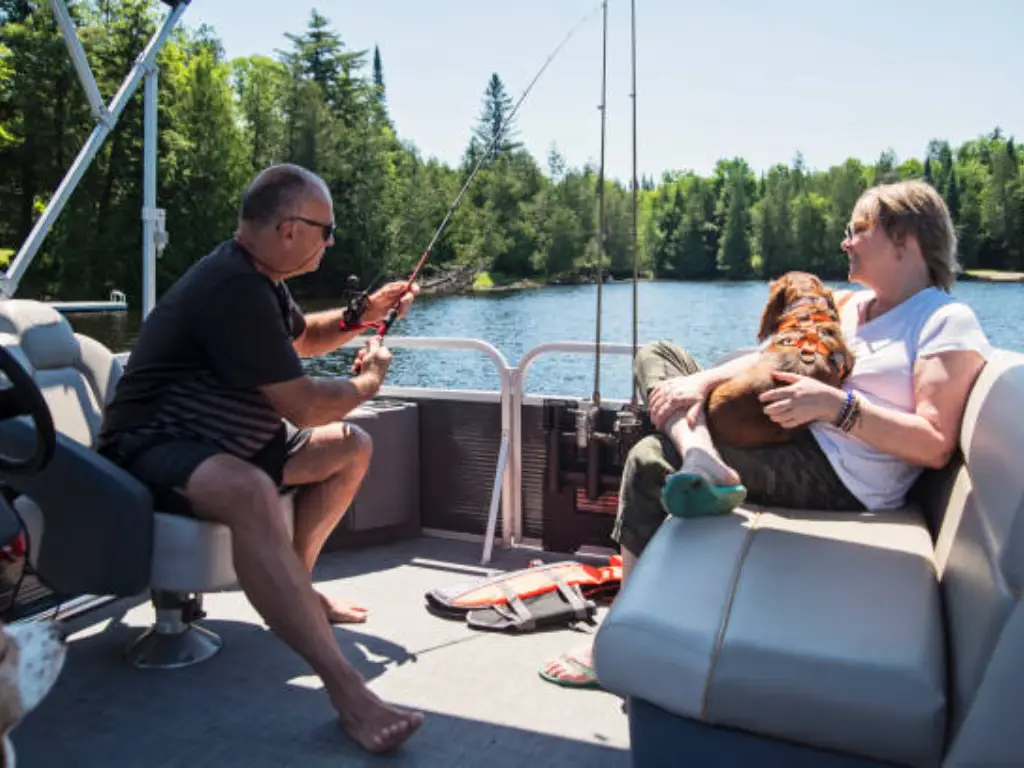
Choosing the Right Pontoon Boat for Fishing
Picking the best pontoon boat for fishing for the first time is important when you want to create a great and practical setup. Although most pontoons are designed for cruising, some are not as good for fishing. Both new and experienced anglers must know the differences between a general-use pontoon and one made for fishing.
The design of the pontoon should be one of the first things you check. When a fishing-friendly layout is used, you have plenty of space to cast and move without bumping into anything. Choose boats that have fishing rod holders, a place to store your rods, and space to attach a fish finder or trolling motor. A good layout usually has bow and stern fishing areas, and sometimes these areas have swivel aluminum frame seats, so anglers can fish in any direction without moving the boat.
How big the area is matters a lot as well. For people who are new to boating, smaller pontoons (16–20 feet) are simpler to handle because they are easier to trailer, launch, and steer. If you need more space for people and luggage, a larger model is better, but it needs a stronger motor and more care to drive safely. The type of fishing you plan will help you decide if a compact or a larger boat is better.
The materials used in construction should not be ignored. Fishing pontoons are usually made with fiberglass or aluminum frames. Aluminum is easy to handle, does not rust, and requires little care, so it is often picked for freshwater fishing. Vinyl flooring is a common choice because it is simple to clean, waterproof, and provides good traction, a useful addition to any fishing area.
Your budget should reflect what you want to achieve in the future. Even though a basic pontoon may seem appealing, buying one that suits your fishing requirements from the beginning can prevent you from having to upgrade or fix it soon. Understanding how much a pontoon boat costs will help you set a realistic budget. You can find great options for fishing boats at many different prices, and usually it’s cheaper to buy one ready for fishing than to modify a cruiser-style pontoon later. Choosing a reputable pontoon boat manufacturer is a critical first step, as they can offer specialized fishing models built with durable materials and smart layouts.
Must-Have Equipment for Your Pontoon Boat Fishing Setup
The first step in making a reliable pontoon boat fishing setup is to pick the right equipment. The following things are necessary for new anglers who want to stay safe, work efficiently, and enjoy their fishing more:
| Equipment | Primary Function | Beginner Tip |
| Trolling Motor | Enables quiet, controlled movement near fishing zones | Choose a model with variable speed and remote or foot pedal control |
| Fish Finder | Detects fish, structure, and depth with sonar technology | Start with a basic GPS/sonar combo for ease of use |
| Fishing Rod Holders | Keeps rods secure while trolling or changing tackle | Install multiple holders for flexibility in positioning |
| Rod Storage | Prevents rod damage and declutters the deck | Vertical storage saves space on smaller boats |
| Anchor System | Holds the boat in place in wind or current | A fluke anchor works well for most freshwater locations |
| Portable Tackle Cases | Organizes lures, tools, and accessories | Look for waterproof models with adjustable compartments |
| Cooler or Livewell | Keeps fish or bait fresh during longer trips | Doubles as a seat or table on smaller pontoons |
| Navigation & Safety Gear | Ensures legal compliance and on-water safety | Always check local regulations before departure |
These are the main parts needed for a pontoon boat to be used for fishing. They give you the skills you require to sail safely and effectively. After you have the basics, you can add more upgrades, but it’s best to start with these essentials if you are new to fishing.
Optimizing Your Boat Layout for Fishing Efficiency
The way you arrange your pontoon boat for fishing is very important for your safety and the quality of your fishing trip. For those new to fishing, making sure the boat is well organized inside helps them move, access their gear, and cast more easily during the trip.
- Define Functional Zones
The first step in planning a layout is to mark out different areas on the deck. Make sure you have a spot for casting at either the bow or stern, since that’s where you can see and shoot the farthest. Near this area, make a spot for your gear that has storage for your rods, a fish finder, access to the trolling motor, and an anchor point you can reach easily. With this arrangement, anglers can work smoothly without having to move around the boat a lot.
- Maximize Deck Space
To make it easier for people to move, check the current arrangement of seats. If you have too much furniture, consider removing it or switching out big loungers for smaller aluminum frame seats to free up more room on the deck. Swivel seats are useful when you have to handle several lines at once. This way of fishing is very useful when you are fishing with a group.
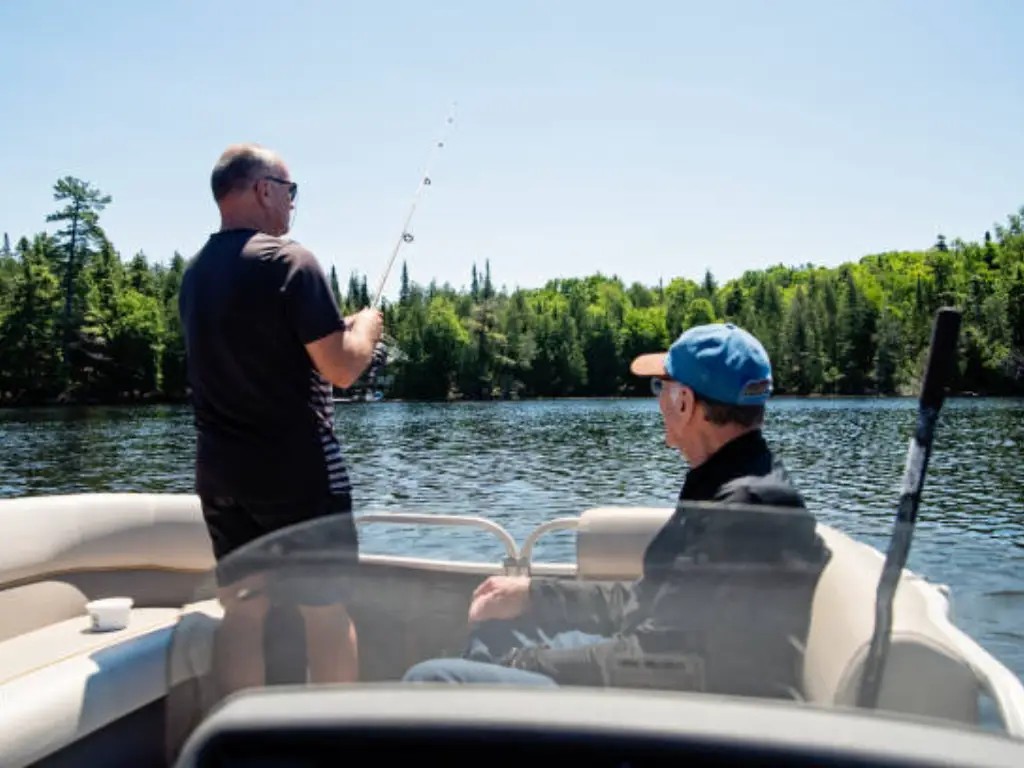
- Use Vertical Storage
Rail-mounted or side-mounted fishing rod holders help keep the deck organized and keep the rods safe. These systems let you quickly reach your rods and save space on the floor. In the same way, organizers fixed to the inside rails or consoles are a good choice for storing your tools and bait without blocking your casting area.
- Prioritize Accessibility and Safety
Make sure that the anchor, cooler, and tackle boxes are put where you can reach them easily. Do not block the path with your equipment, since it is important to have space to move safely while fishing. Clear and dry deck areas are important to avoid slips and falls.
- Layout Flexibility
Remember that a fishing pontoon boat is very flexible. You can easily update your setup by using furniture that can be moved and mounts that can be adjusted. Making a layout that is easy to customize can help you save money and time in the future.
If you arrange your pontoon boat fishing equipment with space, access, and purpose in mind, you will enjoy better results and more comfort while fishing. A well-planned layout supports convenience and also helps make fishing safer and more successful.
Flooring and Comfort Upgrades for Better Fishing
Upgrading your pontoon boat for fishing can greatly improve your time on the water. Flooring and seating may not seem important, but they play a big role in how well and how long you can perform on the water.
- Flooring
Vinyl flooring is one of the best upgrades you can make. Vinyl is useful for fishing since it is waterproof, dries fast, and is simple to look after. Vinyl is better than carpet because it does not hold onto moisture, smells, or debris, which is useful in places where bait, fish slime, and similar things are present. A lot of marine-grade vinyls have a textured surface, which helps prevent slipping when the deck is wet.
- Seating
Another important step is to switch to lightweight and comfortable seating. If you replace your old or large seats with aluminum frame seats, you will have more space and find it easier to move around the deck. They are made to resist rust and are usually more durable, so they last for a long time. Fishing with a swivel model makes it possible to cast from different angles without having to move the rod often.
- Shade and Weather Protection
A Bimini top or similar shading system helps protect you from the sun when you are out for a long time. Being in the sun for a long time can make you uncomfortable and unhealthy, so a shade that can be adjusted or taken off helps you stay longer on the water. If you want to save money, you can use modular shade structures with telescopic poles and portable cases.
- Additional Comfort Enhancements
Cup holders, gear organizers, and built-in storage are other useful features to have. They keep the area organized and free up more space, so anglers can concentrate on what they are doing. Putting non-slip mats in busy areas on the boat can help prevent falls while walking.
In the end, making your flooring and seats comfortable is important for both convenience and for building a strong and comfortable base for your pontoon boat fishing. With these improvements, fishing trips become more focused, productive, and safe, mainly for those who plan to be on the water for a long time.

Anchoring and Positioning: Staying Put While You Fish
Staying in one place on the water is very important for successful pontoon boat fishing. Proper anchoring and positioning in any water help you stay efficient, so you can concentrate on your fishing and not worry about moving your boat all the time.
Traditional Anchoring
Traditional anchors are still a key part of most fishing pontoon boats. Due to the size of a pontoon, using a strong anchor is important to prevent the boat from moving. Fluke anchors are best for sandy or muddy bottoms, but mushroom anchors are better for soft lake beds. Placing anchors from the bow or stern is better than from the side to avoid the boat swinging and drifting.
Trolling Motor with GPS Positioning
In the past few years, anglers have started using trolling motors that have GPS anchoring, commonly known as “spot lock” or anchor lock. They make it possible to hold the boat in place with no hands, using GPS and the boat’s motors to guide it. It is especially useful in places with light winds or currents, since standard anchoring may not provide enough control. It helps anglers achieve accurate fishing when they are working along structure lines, drop-offs, or underwater vegetation.
Dual Anchor Systems
A dual anchor system is a good idea for fishing in bigger bodies of water or at offshore spots, as it gives more stability. Having an anchor at the front and another at the back of the pontoon helps keep the boat straight and in the right fishing spots. It is especially helpful when you are fishing near brush piles or ledges, since your boat can make it hard to cast accurately.
How well you manage your boat’s position will play a big role in your fishing success. No matter if you use old or new techniques, a strong anchoring plan is a great idea for keeping the boat steady and making fishing more effective.
Budget-Friendly Tips for DIY Pontoon Boat Fishing Setup
You don’t have to spend a lot of money to set up a pontoon boat for fishing, especially if you are new to it. A lot of anglers manage to have a setup that works well and is easy to use by choosing low-cost materials and simple ways to install them.
Seating and Comfort
You can use old aluminum frame seats from boats or buy them from marine surplus suppliers for your boat. These seats are usually made from light materials that do not rust and are perfect for boats. Properly installed, they are stable and useful, and they cost less than more expensive options. You can add marine-grade seat cushions at a later time to make the boat more comfortable.
Storage and Organization
You can store your tackle, tools, and small gear in portable cases or standard toolboxes that are not expensive. You can find waterproof or stackable containers at general hardware stores and use them instead of marine storage systems. Rod holders that you make yourself from PVC pipe can be attached to railings or the deck to keep your rods safe and easy to reach while fishing.
Flooring Improvements
Using vinyl flooring for the deck is a low-cost method to make it last longer and be easier to maintain. Many peel-and-stick marine vinyls are available, simple to put on, and give a good grip when the surface is wet. The upgrade also prevents moisture from accumulating, which makes the deck cleaner and lasts longer.
Layout Modifications
You can make changes to the pontoon’s layout little by little. You can make your vehicle more useful by adding gear mounts, folding tables, or simple utility rails. Sometimes, regular coolers can be modified to hold bait or live fish, giving a simple alternative to buying livewells.
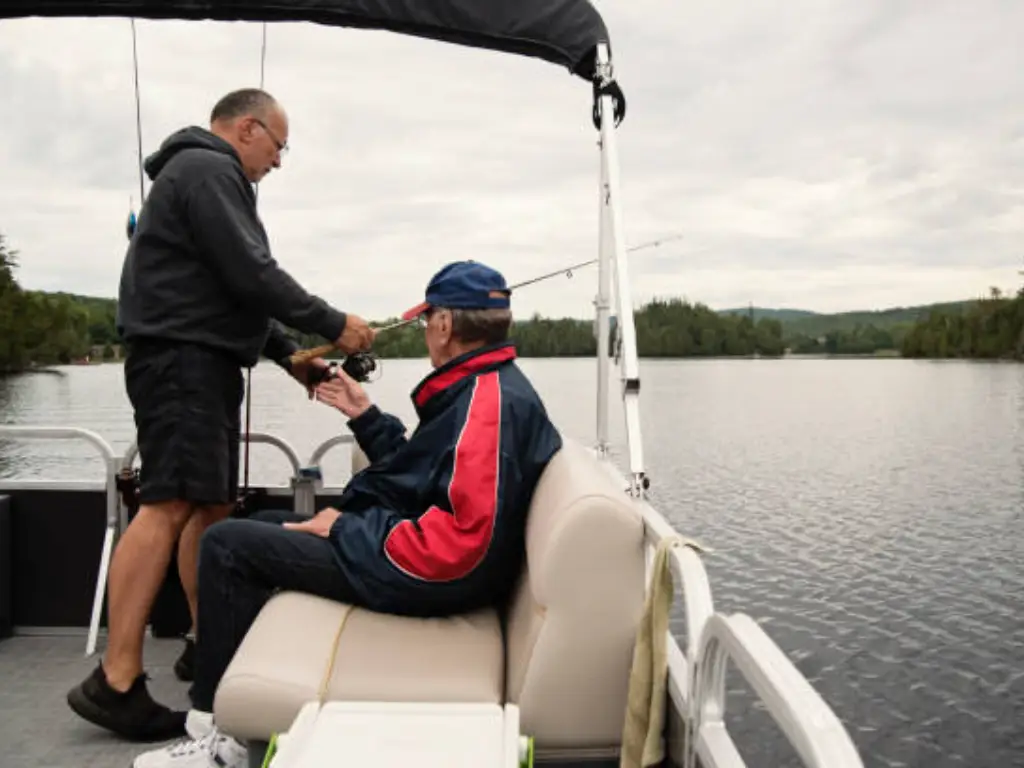
Maintenance Tips to Keep Your Fishing Pontoon in Top Shape
Taking care of your pontoon boat fishing setup through routine maintenance helps it perform well, stay safe, and last for a long time. A regular maintenance routine prevents problems with the equipment, makes it last longer, and guarantees that every fishing trip contributes to a great fishing experience, ensuring it is both successful and safe.
- 1. Cleanliness and Surface Care
After you finish using the boat, clean the deck well, especially if you were using bait, fishing, or anything that could get muddy. Although vinyl flooring is tough and waterproof, it can wear out if it is not regularly cleaned. Get rid of debris, fish residue, and stains to avoid damage and bad smells in the long run. Cleaning your car often helps to prevent mildew, especially in areas that are not exposed to sunlight.
- 2. Electrical Systems Check
Check all the electrical devices, such as the trolling motor, fish finder, and lights. Check for any signs of rust, loose joints, or broken wires. Properly cleaning and connecting the battery terminals is necessary for the battery to work well. Apply dielectric grease to the terminals and connectors to prevent corrosion in places with high humidity or saltwater.
- 3. Engine and Mechanical Maintenance
Regardless of whether you use an outboard or a trolling motor, follow the service instructions given by the manufacturer. You should do oil changes, replace the fuel filter, and flush the engine regularly, especially after being in saltwater or brackish water. Make sure that the steering and throttle controls are smooth and not blocked.
- 4. Hull and Pontoon Inspection
Look for any dents, cracks, or leaks on the pontoon tubes. The sides and bottoms of the pontoons are most likely to get damaged when the boat is launched or docked. Fix any structural issues as soon as they are noticed to ensure the boat stays afloat and steady.
- 5. Material Protection
Treat the fiberglass, metal parts, and seats or canopies with UV protectant. If materials are left in the sun and open air for a long time, they may fade, crack, and become less useful.
Safety and Legal Must-Knows Before You Launch
You should make sure that all safety and legal rules are in place before you go out fishing with your pontoon boat. Beyond just having the right equipment, knowing how to drive a pontoon boat safely is paramount. These rules and skills are necessary to safeguard both the environment and passengers, and to prevent any problems with the law that could disrupt your fishing trip.
| Equipment | Legally Required | Purpose | Notes |
| Boat Registration & Fishing License | Yes | Ensures legal compliance for boating and fishing | Keep in a dry, easily accessible location |
| Personal Flotation Devices (PFDs) | Yes | Provides flotation in case of overboard incidents | One per person; children must wear them |
| Fire Extinguisher | Yes | Required for engine or fuel-related fires | Check annually; type ABC recommended |
| Sound Signaling Device (Whistle/Horn) | Yes | Emits sound in fog or emergencies | Must be audible from at least 1/2 mile |
| Throwable Flotation Device | Yes | Assists in rescuing a person overboard | Store in an open, reachable location |
| Navigation or Anchor Lights | Yes (at night) | Required during low visibility or night operation | Not required during daylight |
| First Aid Kit | Recommended | Treats fishing-related injuries like cuts or sunburn | Use a waterproof case; check expiration |
| Flashlight or Visual Signals | Recommended | Used for night visibility or emergency signaling | Waterproof and floating models are preferred |
Conclusion: Build Your Ideal Pontoon Boat Fishing Setup Today
A good pontoon boat fishing setup is not just about buying expensive things—it’s about making the area comfortable for you and your fishing needs. No matter if you’re a beginner or an experienced angler, pay attention to the layout of the pontoon, the strength of the rod holders, the quality of the vinyl floor, and the amount of space you have for a successful fishing trip. They are not only improvements; they are the basis for a successful setup.
Every time you go fishing, you’ll discover what works well and what doesn’t. With time, making little changes, such as adjusting where you store your rods, using a better anchor, or upgrading your seating, will help your boat suit you perfectly. At the end of the day, a well-designed fishing pontoon boat becomes an important part of your fishing adventure. It allows for longer days, better concentration, and more fun while you are on the water. That is what counts.


